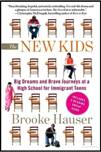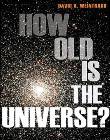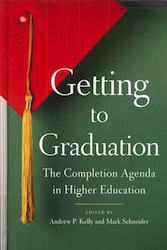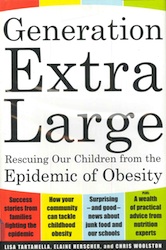Author Brooke Hauser will talk about “The New Kids: Big Dreams and Brave Journeys at a High School for Immigrant Teens” at 7 p.m. on Monday, December 3, in the Irvin L. Young Auditorium. It’s the last Fall 2012 Contemporary Issues Lecture.
Google Books summarizes this work of “narrative journalism” as a chronicle of a year in the lives of teenagers who are new to the United States and its culture, as they are adjusting to this culture and surviving various obstacles (war, pressures to marry or work, etc.).
 Andersen Library has a copy of Hauser’s book, and related information as well, if you’d like to learn more. Search HALCAT to find that Hauser’s book is at the 2nd-floor New Arrivals Island, LC3746.5.N7 H38 2012. Search for phrases like “children of immigrants” to find additional titles with related information, e.g., Learning a new land: Immigrant students in American society (3rd-floor Main Collection, LC3746 .S83 2010), Inheriting the city: The children of immigrants come of age (3rd-floor Main Collection, JV6600 .I64 2008), and Identity Formation of Vietnamese Immigrant Youth in an American High School (eBook). Search article databases to find articles such as “Promoting Academic Engagement Among Immigrant Adolescents Through School-Family-Community Collaboration” (Professional School Counseling, 2010, vol.14:no.1, pp.15-41) and “Parental Contributions to Southeast Asian American Adolescents’ Well-being” (Youth & Society, 2008, vol.40:no.2, pp.289-306).
Andersen Library has a copy of Hauser’s book, and related information as well, if you’d like to learn more. Search HALCAT to find that Hauser’s book is at the 2nd-floor New Arrivals Island, LC3746.5.N7 H38 2012. Search for phrases like “children of immigrants” to find additional titles with related information, e.g., Learning a new land: Immigrant students in American society (3rd-floor Main Collection, LC3746 .S83 2010), Inheriting the city: The children of immigrants come of age (3rd-floor Main Collection, JV6600 .I64 2008), and Identity Formation of Vietnamese Immigrant Youth in an American High School (eBook). Search article databases to find articles such as “Promoting Academic Engagement Among Immigrant Adolescents Through School-Family-Community Collaboration” (Professional School Counseling, 2010, vol.14:no.1, pp.15-41) and “Parental Contributions to Southeast Asian American Adolescents’ Well-being” (Youth & Society, 2008, vol.40:no.2, pp.289-306).
If you’d like assistance with finding additional materials, please ask a librarian.

 Like to learn more? Andersen Library can help! Search
Like to learn more? Andersen Library can help! Search 
 Are there books, graphic novels, audio books, videos, video games, CDs, etc., that you wish Andersen Library would consider acquiring? Let us know by hanging your wish(es) on the tree!
Are there books, graphic novels, audio books, videos, video games, CDs, etc., that you wish Andersen Library would consider acquiring? Let us know by hanging your wish(es) on the tree!
 Student Wisconsin Education Association (StWEA) will again be hosting a Scholastic Book Sale within the Andersen Library.
Student Wisconsin Education Association (StWEA) will again be hosting a Scholastic Book Sale within the Andersen Library.
 Plan ahead! Hours of the Andersen Library and Food for Thought café are affected by the Thanksgiving holiday.
Plan ahead! Hours of the Andersen Library and Food for Thought café are affected by the Thanksgiving holiday.